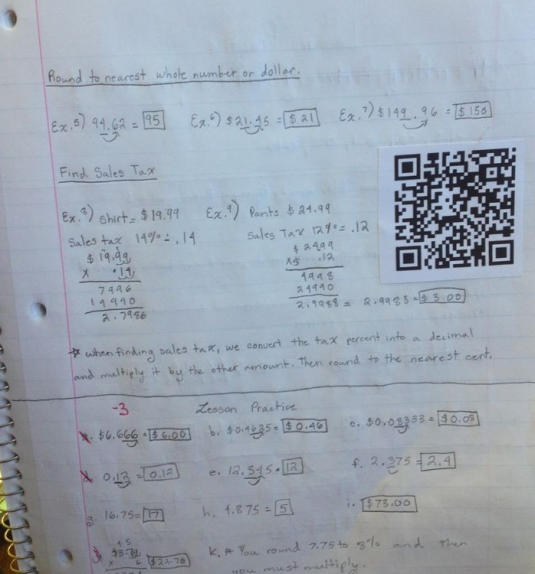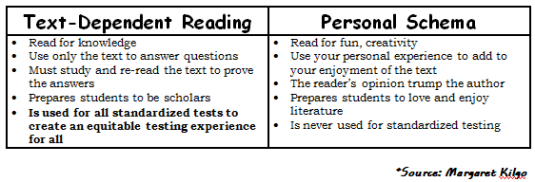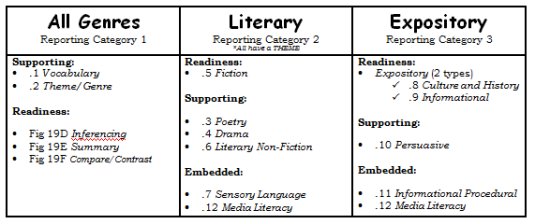My Recommendation for Organizing your ELA Curriculum
Reading and Writing should be integrated into one ELA curriculum, and a “thematic topic” approach should be used. Teachers should search for a way to group reading, writing, research, listening and speaking strands into thematic topics. This approach is best for classroom instruction for two reasons:
- It provides the teacher with an opportunity to embed relevant and multilevel standards into the instruction (Rakow, 2008).
- It provides an opportunity for students to study a larger concept or theme and then explore many other diverse examples of skills associated with that concept or theme across the content.

What NCTE Says About the Integrated (Thematic Topic) Approach
The NCTE (National Council of Teachers of English) supports the integration of reading and writing in the curriculum. In a statement on their website they said, “Findings from recent education research show that students learn the language arts best when reading, writing, and literature are integrated…” (Position Statements, 1982-2008). The state of Texas has already divided the standards into strands, and within those strands the specific TEK is associated with a genre. This move by the state was a step towards ensuring that reading and writing curriculums across the state are integrated into one ELA curriculum.
The figure below shows how one genre, persuasive writing, is addressed in the reading and writing TEKS.

In specific content areas, like English/Language Arts, the curriculum should reflect the elegance and sophistication unique to the discipline (Rakow, 2008) An instructional opportunity is missed if students cannot see the connection between the identifiable elements of a persuasive text, for example, and how a writer can use literary devices to persuade or affect the reader.
A thematic approach based on genre would be the most sensible way to integrate the reading and writing curriculum. The NCTE supports a literature-based approach to teaching ELA. This approach would be similar to a “whole-language” curriculum model, where elements of each of the four TEKS strands are integrated into one unit of study (Rakow, 2008). For example, when studying persuasive writing, students would learn about fact versus opinion in reading, and about writing thesis statements, main ideas, and supporting details in writing. Within this unit of study, students will research and present their side of an issue to the class, and then revise and edit persuasive texts for grammatical errors and weaknesses in the author’s arguments. This kind of integrated, thematic approach to teaching ELA would cover a broader and larger amount of TEKS, at a greater depth, in a shorter amount of time.
Steps for Getting Started
- The thematic approach to writing and implementing ELA curriculum may be time-consuming and work intensive for the teacher at first. Administrators can support their teachers by giving them time to during the school day to plan and discuss how they will divide up the TEKS and which genre to start with. Administrators should keep in mind that this approach is more sophisticated than teaching the TEKS in numerical order or using a part-to-whole or whole-to-part approach. A thematic approach requires the teacher and students to have a deeper understanding of the content in each strand of TEKS (reading, writing, research, and speaking and listening.)
- If the teachers are responsible for writing the curriculum, they will need support from the campus instructional leader and/or the district coordinator when planning for instructional strategies and common assessments.
- The curriculum writer(s) would have to start with a central genre, and identify subtopics to be taught within that genre. (This should be fairly easy since the reading and writing TEKS are already broken down by genre.)
- Within each thematic unit over genre, important terms, facts, or skills will need to be identified. Some TEKS or skills may be re-taught multiple times throughout the year, due to the fact that they can be studied as a part of multiple types of genres.
Below is a sample of my school’s 8th grade Reading “Semester-At-A-Glance” (other schools may refer to this as Scope and Sequence):

The Bottom Line
A whole other blog post (or 3 or 10) could be dedicated to why we chose to scaffold the genres in the way that we did. But since this blog post is essentially about how to organize you ELA curriculum, I’ll leave you with a few parting thoughts on why an intergrated and thematic topic approach based on genre is best…
An integrated and thematic approach to teaching middle school ELA would cover a broader and larger amount of TEKS at a greater depth, in a shorter amount of time. This approach provides teachers with the opportunity to embed relevant and multilevel standards into the instruction. Students are able to comprehend the larger concept of genre as it pertains to reading and writing, and then understand the specific skills associated with a particular genre. In middle school ELA, the most effective way to sequence and organize the ELA curriculum, so that it is taught at a depth that is appropriate for the STAAR test, is to use an integrated, thematic approach.
Works Cited and Studied
Ediger, M. (2002, February 18). Designing the Reading Curriculum. North Newton, Kansas: Educational Resources Information Center.
Kilgo, M. (2011, August 3). ELA Scope and Sequence. Austin, TX: Kilgo Consulting, Inc.
Position Statements: Resolution on Literature-Based Reading Instruction . (1988-2008). Retrieved Septemeber 2011, from National Council of Teachers of English: http://www.ncte.org/positions/statements/litbasedreadinginst
Position Statements: Resolution on the Development of Instructional Materials that Integrate the Language Arts. (1982-2008). Retrieved September 2011, from National Council of Teachers of English: http://www.ncte.org/positions/statements/instructmaterials
Rakow, S. R. (winter 2008). Standards based v. standards embedded curriculum: Not just semantic. Gifted Child Today , 31 (1), 43-49.
Reeves, D. (2002). The Leaders Guide to Standards: A Blueprint for Educational Equitity and Excellence. San Francisco: John Wiley and Sons.
Siegel, G., Chittenden, L., Jensen, J., & Wall, J. (1980). Sequences in writing: Grades K-13. Curriculum Publication No. 13 . Berkely , California: Educational Resources Information Center.
Texas Education Agency. (2009-2010). Retrieved September 2011, from Chapter 110: TEKS for ELA, Subchapter B. Middle School: http://ritter.tea.state.tx.us/rules/tac/chapter110/ch110b.html
Thomas, W. (1987). The English-Language Arts Model Curriculum Guide, Kindergarten Through Grade Eight. Sacramento : California State Department of Education.















